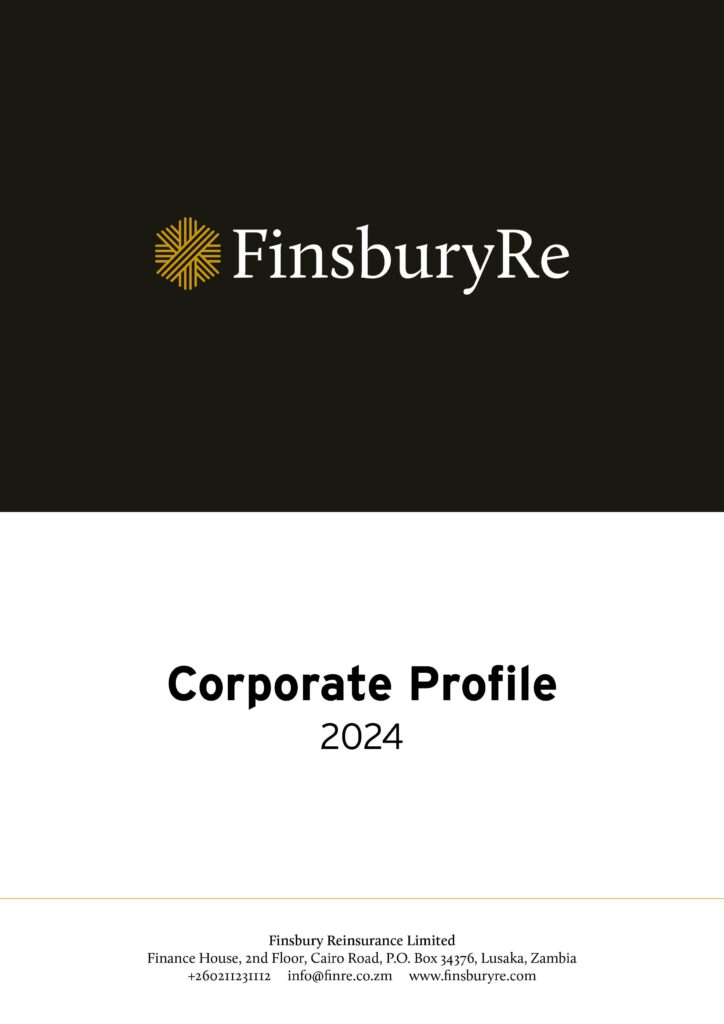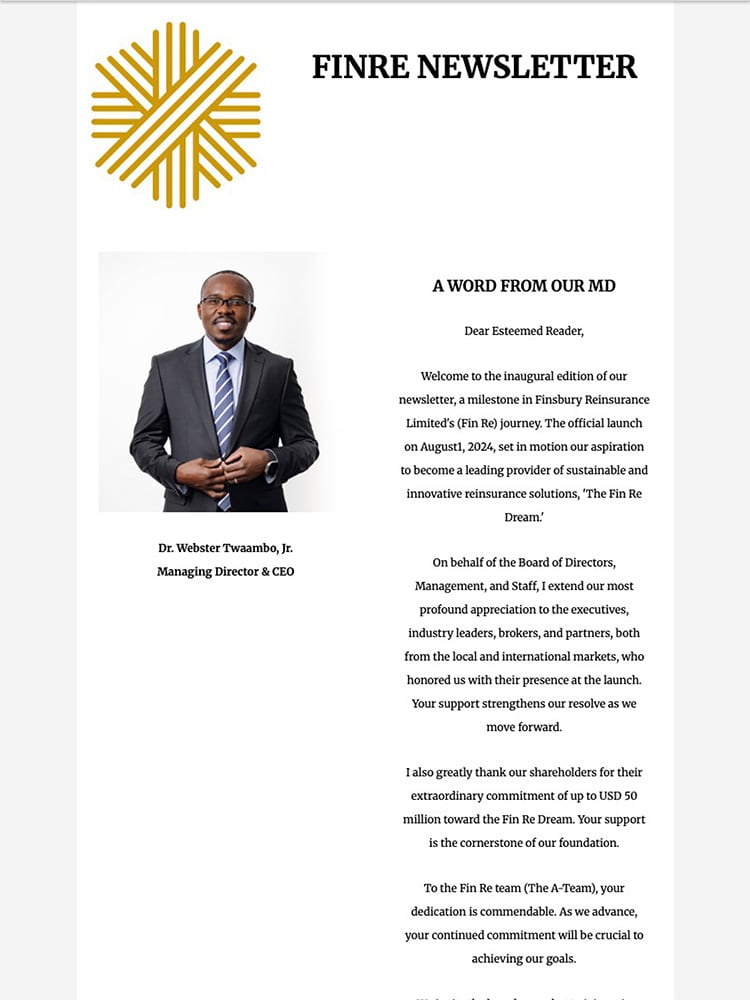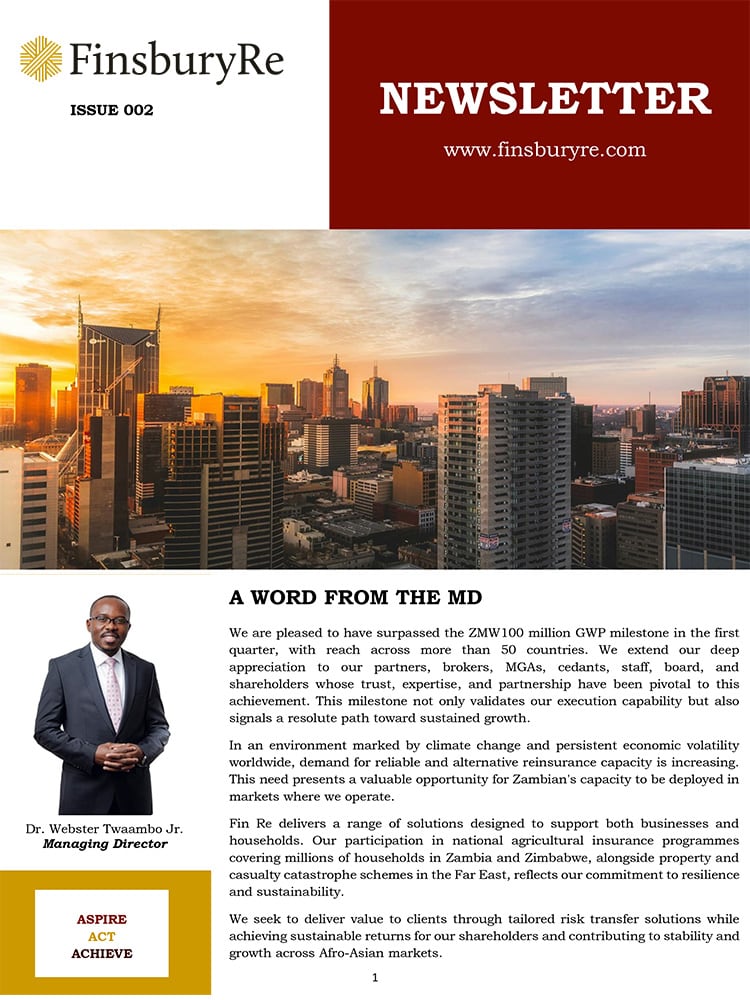Welcome to Finsbury Reinsurance
All the way
Providing customer-centric reinsurance solutions sustainably, innovatively and professionally that are appreciated at the international level and benchmarked against global standards.
Our Business
We are one of the new additions to the reinsurance market securities, but a team of experienced professionals, with exuberance and eager to bring a “newness”. We provide tailor made reinsurance solutions that precisely meet the market needs, and partner with the world’s best to service our esteemed clients. As we journey ahead, we write the chapter of a security that walks the talk and stands by your side all the way as your trusted partner.

Life & Health Policies
FinsburyRe’s team of specialist life underwriters will provide capacity that ensures clients leverage off our range of products and services to manage their portfolio, with a combination of experience and fresh perspectives, with review of reports and statistical data, aided of course by our state-of-the-art core system.

Property & Casualty Policies
We offer reinsurance quotes for various products, with consistent and reliable risk appetite, ranging across proportional and non-proportional treaties, as well as facultative cover. Finsbury Re’s capacity is backed by insights to our clients, that they can leverage to better understand and manage their exposures, hence driving value across their portfolios. We offer both general and life reinsurance, across various lines of business.
Why choose Finsbury Re?
At Finsbury Re, we don’t just mitigate risk; we redefine resilience, ensuring your future is as secure as your present.
“We Are Your Shield”
With a clear value proposition outlined above, our reinsurance solutions are crafted with precision, underpinned by unwavering financial strength and a commitment to innovation. In a world of immense exposure and uncertainties, we stand as your steadfast partner, offering risk management strategies that empower you to navigate through challenges and emerging risks with confidence.
Commitment
Means implementing strategies rigorously and ensuring business objectives are realised, which aligns with our vision, mission, and corporate values. We aim to position Finsbury Re as a model reinsurer, contributing to sustainable growth and supporting ESG’s in making a positive impact globally.
Technology Integration
Technology is fundamental to our operation, a key ingredient to innovation, efficiency, and effectiveness. We hold steadfast to:
- Reliance on data-driven decision-making
- Significant investment in technology and accurate data analysis
- Streamlined processing for improved service and operational efficiency
- State-of-the-art systems to support our reinsurance operations
Finsbury Re Company Profile
Finsbury Re Latest Insights
At Finsbury, sustainable reinsurance is at our heart and what we endeavor to sustain. We believe in technology; innovation and a world were data-driven-discission is the way to evolve and provide solutions. Enjoy and look forward to our updates and insights, we keep you informed on a variety of interesting topics, both current and historic facts relevant to reinsurance that will help you make sound business decision.

Congratulations to our Group Executive Chairman
The Board, Management, and Staff of Finsbury Reinsurance Limited extend heartfelt congratulations to the Group Executive Chairman Dr. Rajan Mahtani, on receiving the Lifetime Achievement

Part 2: Warranties and Their Impact on Your Insurance Policy
Warranties: The Promises You Must Keep Warranties in insurance policies are more stringent than conditions; they are ongoing promises that you agree to uphold for

Part 1: Understanding Exclusion Clauses and Conditions in Your Insurance Policy
When you purchase an insurance policy, it is more than just a safety net—it is a complex contract with various terms and clauses. Among these


